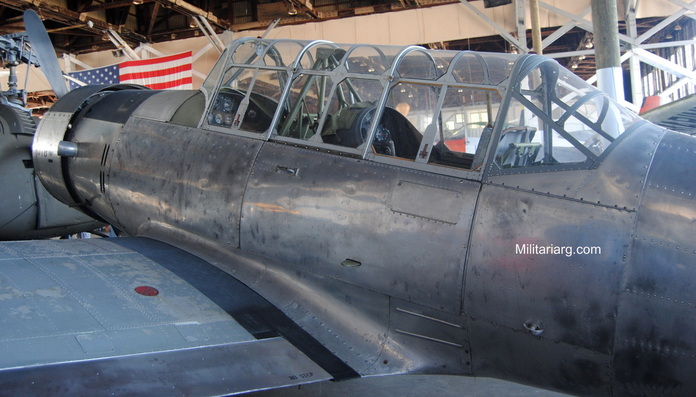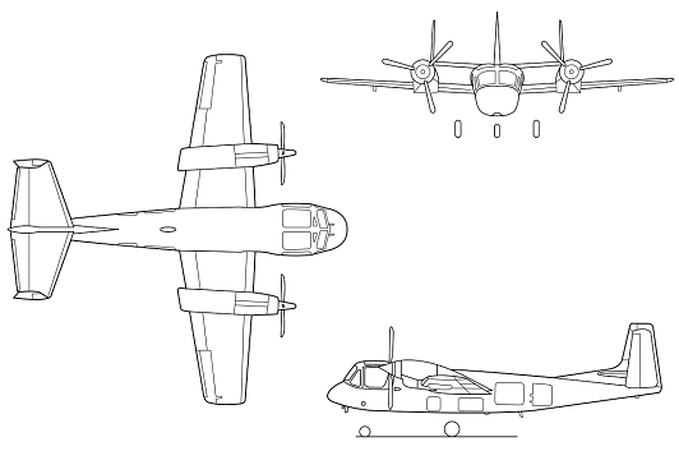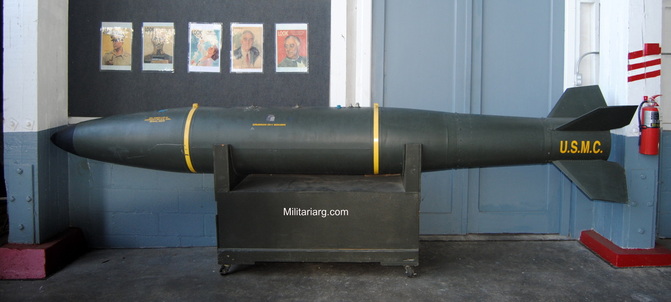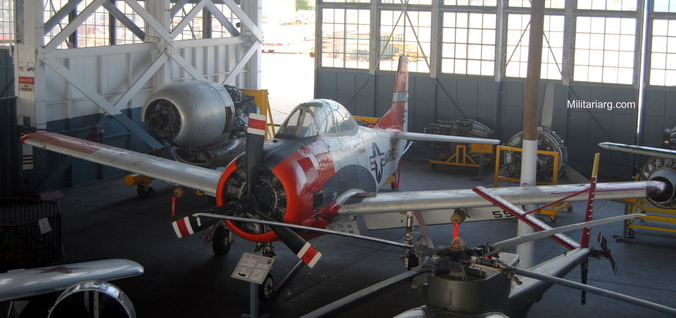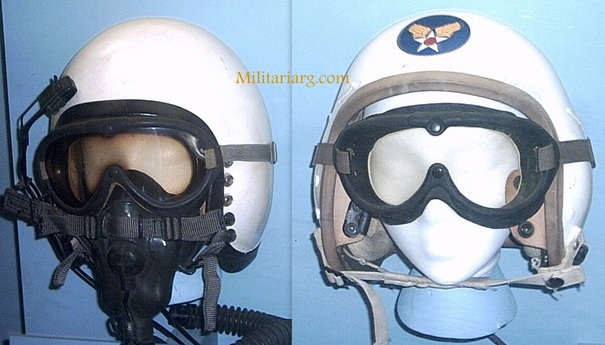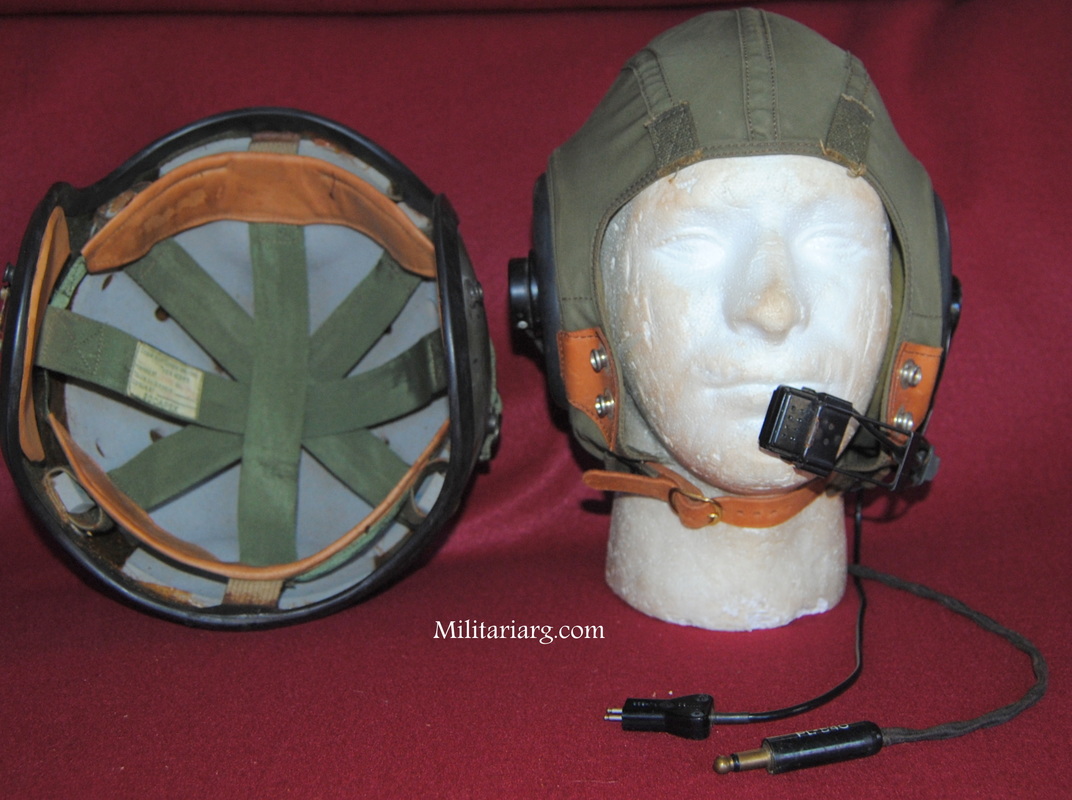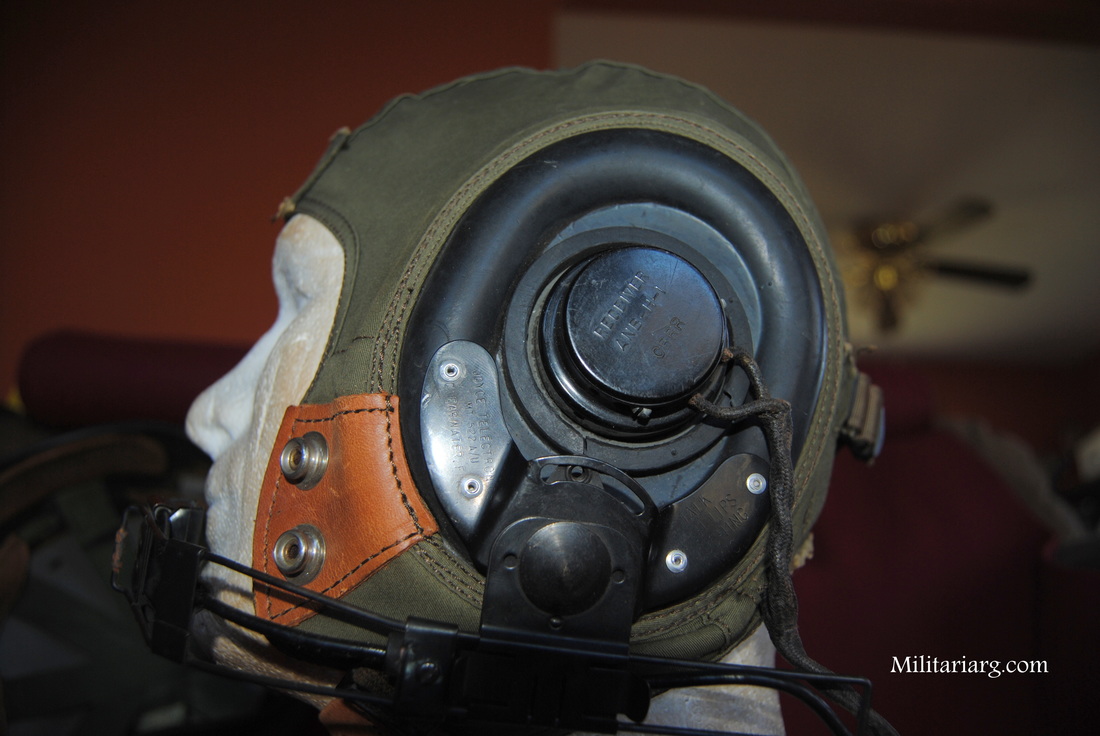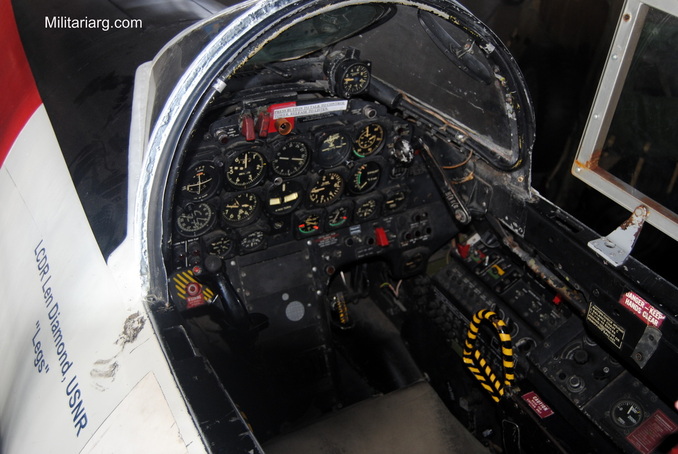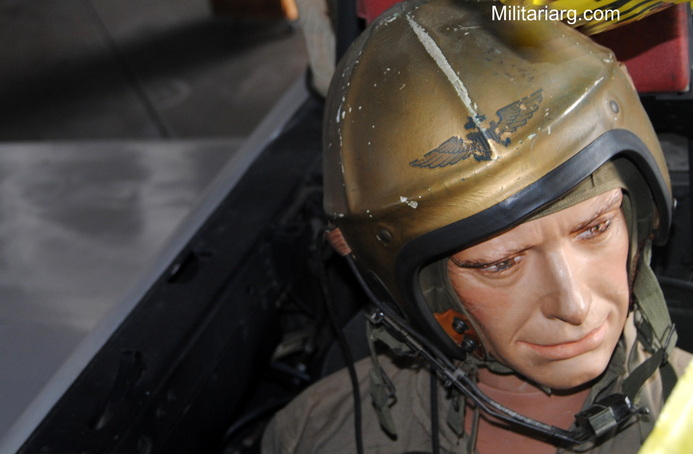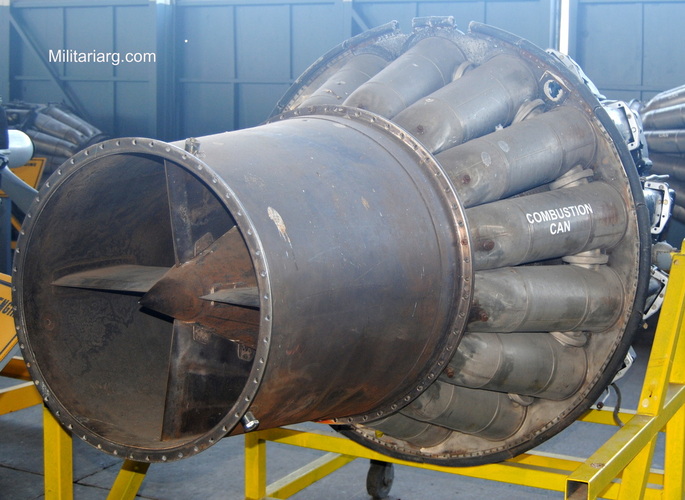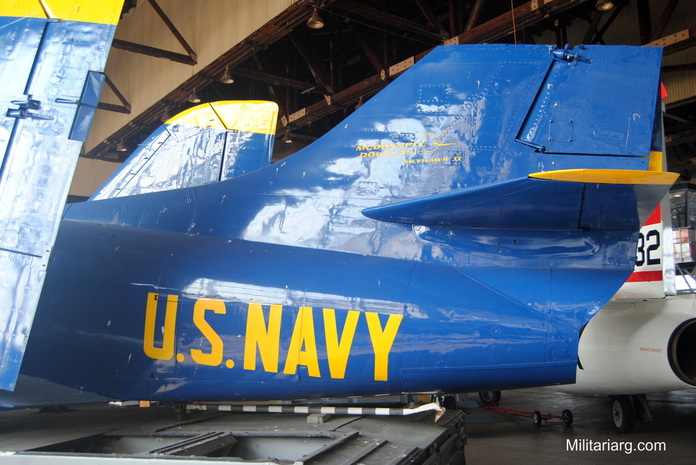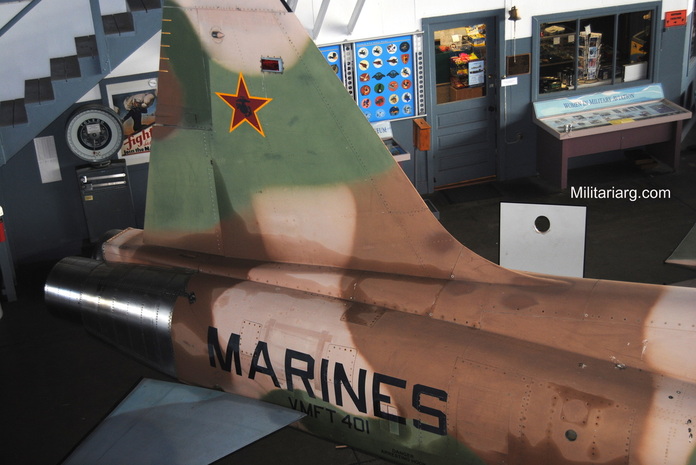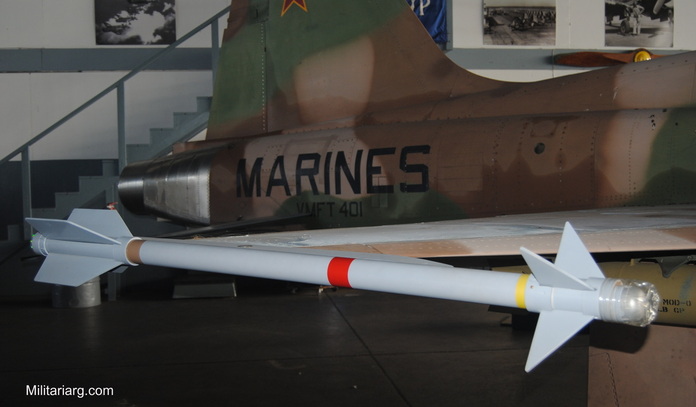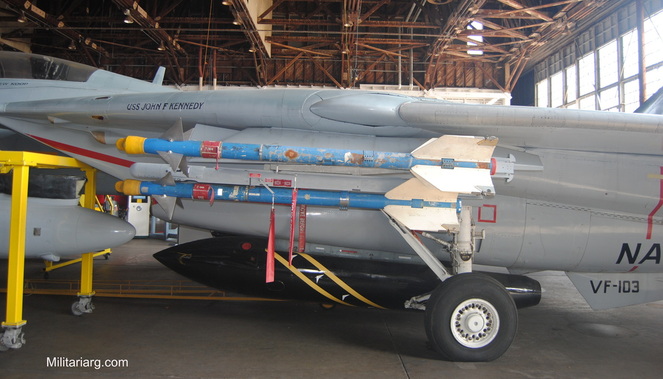Boing-Stearman PT-17 Kaydet.
PT-17. Built in 1943 and one of the 10,346 that Boeing produced. Biplanes were the most widely used basic trainers of World War II.
Boeing Aircraft Co 1940. 220 HP, Continental Engine US Army. E. Collins Collection. Cape May Airport Museum NJ.
PT-17 Stearman. Former Operator: Argentine Navy.
1000 lb, Practice Bomb. May be filled sand or water. From the collection of Veterans United Military Memorial Museum.
Wright R-3350. 18 cylinders radial type. Applications A-1 Skyraider, B-29 Bomber. Manufactured in New Jersey.
Wright Cyclone R-1820
Wright Cyclone used on B-17 and DC3. Ralph Cox Collection. Cape May Airport Museum NJ.
Vultee BT-13.
1942, Trainer. Engine P&W R-985, 180 MPH, Max Speed.
Basic Instrument Trainer 45 (Device 1CA-1) Better known as a "Link Trainer"
The basic instrument trainer 45 device 1CA-1, is ground equipment incorporating the necessary controls, switches, interments and mechanisms to realistically reproduce all of the major flight characteristics and isntruments indications of a single-engine, fixed wing aircraft. It provides an effective, economical and safe means for maintaining pilot proficiency and for teaching all phases of elementary and advanced instrument flying, including radio navigation, radio range and loop orientation, instument landing systems, voice procedure and flight and instrument familiarization. This quote from: DEPARTMENT OF THE ARMY TECHNICAL MANUAL TM 55-6930-200-10, describes the functions of the trainer, and perhaps, The First "Virtual Reality Machine". The trainer is being restored by George Kendrick, a former Navy Training Deviceman. Part of his Navy duties were to maintain these trainers. Cape May Naval Air Station Museum, NJ.
Grumman OV-1 MOHAWK
Light Attack. Armed military observation and attack aircraft. Former operator: The Argentine Army. Comparable Aircraft: FMA IA 58 Pucara. Source: Wikipedia.
OV-1 Drop Tanks. MFD by Sargent Fletcher CO, El Monte California. Tank, fuel, aircraft, external, auxiliary, removable. Class II. Capacity: 150 gals x 2. Weight empty: 142 lbs.
TBM-3E AVENGER
TBM-3E AVENGER and MK-46, This weapon cas carried on aircraft and light ships.
The TBM Avenger is one type of aircraft that was stationed at NAS Wildwood durin WWII. The museum (Cape May Airport Museum), Avenger was bult in Trenton, NJ and was recently listed on the NJ and National Registers of Historic Places, a designation applicable to only seven other aircraft nationally.
The TBM Avenger is one type of aircraft that was stationed at NAS Wildwood durin WWII. The museum (Cape May Airport Museum), Avenger was bult in Trenton, NJ and was recently listed on the NJ and National Registers of Historic Places, a designation applicable to only seven other aircraft nationally.
T-28C Trojan
T-28C Trojan.
Type Trainer.
Year: 1949.
Crew: 2
Equipped with arresting gear and used for carried-deck landing training, T-28 were produced beginning in 1949 and replaced AT-6 Texans. The T-28 proved to be effective close air support weapon against enemy ground forces.
Type Trainer.
Year: 1949.
Crew: 2
Equipped with arresting gear and used for carried-deck landing training, T-28 were produced beginning in 1949 and replaced AT-6 Texans. The T-28 proved to be effective close air support weapon against enemy ground forces.
Engine: Wright R-1300-1 Cyclone 7 cylinder radial air-cooled, 800 hp.
Wingspan: 40 ft 1 in.
Lenght: 32 ft 0 in.
Height: 12 ft 8 in.
Max Wt: 6,365 lb.
Max speed: 283 mph.
Ceiling: 24,000 ft.
Range: 1000 miles.
Armament: Provision for machine guns, 200 lbs of bombs.
Wingspan: 40 ft 1 in.
Lenght: 32 ft 0 in.
Height: 12 ft 8 in.
Max Wt: 6,365 lb.
Max speed: 283 mph.
Ceiling: 24,000 ft.
Range: 1000 miles.
Armament: Provision for machine guns, 200 lbs of bombs.
P&W Pratt and Whitney R-2800 Double Wasp.
P&W R-2800 used on Corsair, F6F, DC 6, C 69. The Ralph Cox II Collection. Cape May Airport Museum NJ.
Flight Helmets
Type A-7B. The first modern American oxygen mask. The type A-7B introduced in 1938 was a continuous-flow mask with a rebreather bag covering only the nose of the wearer. It was soon replaced by the muchimproved type A-8 oxigen mask. Smithsonian Air and Space Musum.
F-86 pilots with Top Tex style flight helmet (USAF).
Left: Experimental Protective Helmet made by Stefan A. Cavallo (1944). Test pilot for the National Advisory Committee for Aeronautics at Langley Field. Va. Oxigen Mask: Type A-13A and Polaroid Googles 1944-46.
Right: Improvised Protective Flying Helmet (1945). This helmet was worn during 1945-46 by Capt. John Babel, a test pilot of the P-80A. It was made at Muroc Flight Test Base from an AAF A-11 flying Helmet and an Army Tank Helmet. A hard helmet was necessary to protect the jet pilot's head because of the buffeting encountered at hight speed while flying through rough, turbulent air. Type A-13 Oxigen Mask and type B-8 googles were usde in this helmet. Source Smithsonian Air and Space Museum.
Right: Improvised Protective Flying Helmet (1945). This helmet was worn during 1945-46 by Capt. John Babel, a test pilot of the P-80A. It was made at Muroc Flight Test Base from an AAF A-11 flying Helmet and an Army Tank Helmet. A hard helmet was necessary to protect the jet pilot's head because of the buffeting encountered at hight speed while flying through rough, turbulent air. Type A-13 Oxigen Mask and type B-8 googles were usde in this helmet. Source Smithsonian Air and Space Museum.
Left: U.S. Navy Protective Helmet Type H-1 (1948). The H-1 is significant because it was the first type of hard flying helmet issued to Navy jet pilots as standard equipment. The Helmet was designed to accommodate the issue Polaroid googles . Earphones were built into the chamois-covered rubber padding. The boom microphone was used during flights under 3050 meters (10,000 feet). When the type A-13A oxigen mask with built-in mocrophone was not required.
Right: Helmet, Flying, Protective, Type P-1A, United States Air Force. This was the first type of hard helmet mass produced for standard issue to the United States Air Force jet crewmen to provide buffeting and crash protection. The original P-1 was introduced in March 1948. The P-1A, was identical except for a neck strap which was added to prevent the helmet from tilting up durin maneuvers. With the addition of a sun visor an improved earphones in 1952, the helmet was designated as the Type P-3. The Type A-13A oxygen mask was used with this helmet.
Source: Smithsonian Air and Space Museum.
Right: Helmet, Flying, Protective, Type P-1A, United States Air Force. This was the first type of hard helmet mass produced for standard issue to the United States Air Force jet crewmen to provide buffeting and crash protection. The original P-1 was introduced in March 1948. The P-1A, was identical except for a neck strap which was added to prevent the helmet from tilting up durin maneuvers. With the addition of a sun visor an improved earphones in 1952, the helmet was designated as the Type P-3. The Type A-13A oxygen mask was used with this helmet.
Source: Smithsonian Air and Space Museum.
Left: Helmet, Flying, Protective, Type P-4A, United States Air Force
The original P-1 hard helmet for jet pilots was introduced by the United States Air Force in March 1948. The Type P-4A was basically the same helmet with a sun visor added, improved earphones, and minor refinements to the web lining and straps. The Type MBU-5/P oxygen mask was worn with this helmet which saw extensive service with the Air Force from 1956 to 1964. It was also used by many jet pilots of NATO and other friendly nations around the world.
Right: USAF Full Pressure Helmet, Type MA-2, United States Air Force 1960.
The MA-2 Pressure Helmet was a standard type of high-altitude helmet worn above 50,000 feet and was used for many years with a variety of partial pressure suits. It was basically a soft helmet with a bladder to provide pressure, a detachable outer shell of rigid molded plastic to provide protection and retain the prssure within the defined area, and a transparent faceplate. This example was the spare helmet that belonged to Francis Gary Powers at the time of ill-fated reconnaissance flight in a Lockheed U-2B over the Soviet Union in 1960. The U.S. Air Force insignia normally worn on the front of the helmet was painted over and replaced with Powers' identification number "29"
Source: Smithsonian Air and Space Museum..
The original P-1 hard helmet for jet pilots was introduced by the United States Air Force in March 1948. The Type P-4A was basically the same helmet with a sun visor added, improved earphones, and minor refinements to the web lining and straps. The Type MBU-5/P oxygen mask was worn with this helmet which saw extensive service with the Air Force from 1956 to 1964. It was also used by many jet pilots of NATO and other friendly nations around the world.
Right: USAF Full Pressure Helmet, Type MA-2, United States Air Force 1960.
The MA-2 Pressure Helmet was a standard type of high-altitude helmet worn above 50,000 feet and was used for many years with a variety of partial pressure suits. It was basically a soft helmet with a bladder to provide pressure, a detachable outer shell of rigid molded plastic to provide protection and retain the prssure within the defined area, and a transparent faceplate. This example was the spare helmet that belonged to Francis Gary Powers at the time of ill-fated reconnaissance flight in a Lockheed U-2B over the Soviet Union in 1960. The U.S. Air Force insignia normally worn on the front of the helmet was painted over and replaced with Powers' identification number "29"
Source: Smithsonian Air and Space Museum..
Left: U.S. Navy Flying Helmet with VTAS (Visual Target Acquisition Set. 1972.
VTAS (Visual Target Acquisition Set) is the first helmet-mounted sight system introduced for use with an operational fighter, the U.S. Navy F-4 Phantom II. Developed by the Honeywell Co. and adopted in March 1972, the system provides an arrangement that allows the pilot to aim the aircraft weapons system by looking at the target. The pilot wears an HGU-30/P helmet with a "Granny Glass" attached in front of his right eye. The glass provides a reticle display which is used to sight the target and aim the helmet and various componets of the weapons system. The VTAS I was replaced by the more advance VTAS II system in September 1975. The Type A-13A oxygen mask is worn with this helmet.
Right: Helmet, Flying, Protective, Type HGU-22/P, manufactured by Gentex Corp. United States Air Force.
United States Air Force Type HGU-22/P Protective Flying Helmet; white plastic with sliding sun visor; white plastic cover for visor with red, white, and blue checker board pattern reflextive tape on cover; white nylon adjustable chin strap with snap; white rubber edge; plug for earphones and microphone on left sidge; steel brackets for oxygen mask bayonet clips on each side; manufacturer's tag with black letter text "HELMET SHELL, FLYING, HGU-22/P MIL-H-83147 (USAF) LARGE F41608-75-C-0364 GENTEX CORP." on rear center.
VTAS (Visual Target Acquisition Set) is the first helmet-mounted sight system introduced for use with an operational fighter, the U.S. Navy F-4 Phantom II. Developed by the Honeywell Co. and adopted in March 1972, the system provides an arrangement that allows the pilot to aim the aircraft weapons system by looking at the target. The pilot wears an HGU-30/P helmet with a "Granny Glass" attached in front of his right eye. The glass provides a reticle display which is used to sight the target and aim the helmet and various componets of the weapons system. The VTAS I was replaced by the more advance VTAS II system in September 1975. The Type A-13A oxygen mask is worn with this helmet.
Right: Helmet, Flying, Protective, Type HGU-22/P, manufactured by Gentex Corp. United States Air Force.
United States Air Force Type HGU-22/P Protective Flying Helmet; white plastic with sliding sun visor; white plastic cover for visor with red, white, and blue checker board pattern reflextive tape on cover; white nylon adjustable chin strap with snap; white rubber edge; plug for earphones and microphone on left sidge; steel brackets for oxygen mask bayonet clips on each side; manufacturer's tag with black letter text "HELMET SHELL, FLYING, HGU-22/P MIL-H-83147 (USAF) LARGE F41608-75-C-0364 GENTEX CORP." on rear center.
Right: Helmet, Flying, Protective, Type HGU-20/P, United States Navy.
The HGU-20/P Robert Shaw Controls Co. helmet differs from other protective flying helmets in that it is a closed type with a built-in oxygen system. It was intended to eliminate the need for an oxygen mask and to provide improved helmet retention under windblast. The helmet entered fleet testing in 1965 as was popular with attack squadron aircrews. However, it was withdrawn from service in 1971 because it restricted the pilot's vision in combat.
Right: U.S. Navy Full Pressure Helmet Mark IV. 1960.
The Mark IV helmet was used by the United States Navy for many years as part of the Mark IV High Altitude Full Pressure Suit. The main compoinets of the hlemet consisted of a reinforced plastic hard shell, incorporating oxygen breathing, communications, and suspension equipment. An adjustable tinted sun visor was also provided. The Mark IV outfit was used with the Navy high-performance aircraft such as the F-8 Crusader and F-4 Phantom II, when operating above 50,000 feet. It was adopted by the United States Air Force with modifications and designated as the A/P 22S-3 suit. A further development of the suit and helmet was also used by the astronauts in the Mercury space program.
Source: Smithsonian Air and Space Museum.
The HGU-20/P Robert Shaw Controls Co. helmet differs from other protective flying helmets in that it is a closed type with a built-in oxygen system. It was intended to eliminate the need for an oxygen mask and to provide improved helmet retention under windblast. The helmet entered fleet testing in 1965 as was popular with attack squadron aircrews. However, it was withdrawn from service in 1971 because it restricted the pilot's vision in combat.
Right: U.S. Navy Full Pressure Helmet Mark IV. 1960.
The Mark IV helmet was used by the United States Navy for many years as part of the Mark IV High Altitude Full Pressure Suit. The main compoinets of the hlemet consisted of a reinforced plastic hard shell, incorporating oxygen breathing, communications, and suspension equipment. An adjustable tinted sun visor was also provided. The Mark IV outfit was used with the Navy high-performance aircraft such as the F-8 Crusader and F-4 Phantom II, when operating above 50,000 feet. It was adopted by the United States Air Force with modifications and designated as the A/P 22S-3 suit. A further development of the suit and helmet was also used by the astronauts in the Mercury space program.
Source: Smithsonian Air and Space Museum.
The simulated aircraft carrier USS Smithsonian CVM-76
Douglas SBD-6 Dauntless. Grumman F4F Wildcat. Douglas A-4C Skyhawk
USN Navy H-4 Flying Helmet Cloth Inner made by General Textile Mills Inc Carbondale PA (GENTEX).
Receivers: (HS-38); CBRR ANB-H-1, Black Plug Maked PL-540.
Microphone: CBRD M6A/UR Boom Mounted Mic; MT-522 A/U Mic Braket, marked Joyce Telectronics Clearwater FL. PJ-292 Male Microphone Plug.
Microphone: CBRD M6A/UR Boom Mounted Mic; MT-522 A/U Mic Braket, marked Joyce Telectronics Clearwater FL. PJ-292 Male Microphone Plug.
HGU-26/P PRU-36/P dual clear/dark visor assembly, cast bayonet (Assy), receivers (Dunrite Tool & Die Corp), Oxygen Mask MBU-5/P Sierra Eng Co. Connector oxygen mask to regulator CRU-60/P (SCOTT). It has a dark orange tape on it which may have been to signify training or aerial tricks.
Lockheed T-33 “Shooting Star”
T-33 "Shoting Star". This aircraft, designated T-33, is the trainer version of the Lockheed F-80 Shoting Star Combat Aircraft. The F-80 was originally developed in the 1940's during the war (It was originally designated P-80); It's first flight was in 1944. The F-80 was the fore-runner of American Combat Jet Aircraft and saw action in Korea. As more advanced aircraft were developed, the F-80 was modified into a two seat version (Such as you are see here) and primarily used for training. The combat version of the F-80 originally had six machine guns.
The aircraft has a wingspan of a little over 38 feet and a length of a little under 38 feet (It is wider than it is long), with a height of just under 12 feet.
It can reach 600 miles per hour at sea level and has a range of over 1,200 miles. Cape May Airport Museum, Wildwood NJ.
The aircraft has a wingspan of a little over 38 feet and a length of a little under 38 feet (It is wider than it is long), with a height of just under 12 feet.
It can reach 600 miles per hour at sea level and has a range of over 1,200 miles. Cape May Airport Museum, Wildwood NJ.
Lockheed T-33 “Thunderbird” Cockpit. T-33s are one of the world's best-known aircraft types, having served in the air forces of over 20 countries for almost 40 years. Many are still in use throughout the world. The museum's T-33 (Cape May Airport Museum Wildwood NJ), is reported to have served in the Yugoslavian Air Force.
Alison Jet Engine. Used in: F-80, T-33, Panther G-79. 6600 produced.
Ejetion Seat Test Stand.
OE-2 BIRD DOG
OE-2 BIRD DOG. Vietnam-era aircraft used widely for observation and carrying supplies such as White Phosphorus "Willie Pete" target-marking rockets.
A-4 Skyhawk "Blue Angels"
Designed by Ed Heinemann in response to the Navy's requirement for a fast, compact, long-range lightweight carrier jet aircraft capable of delivering a nuclear weapon and is nicknamed "Heinemann Hot Rod".
Right: U.S Navy TA-4J Cockpit Trainer.
Thermonuclear Weapon carried by this aircraft "Atomic Bone ?".
F-5E Tiger II - Top Gun (Aggressor Camo)
This aircraft is reported to have played the part of the "Aggressor" in the movie Top Gun.
Cockpit or flight deck.
Northrop F-5 Fighter. AIM-9 Sidewinder.
F-14B Tomcat US Navy BuNo 161422. Cape May Airport Aviation Mueum NJ.
This aircraft type played a part in the movie "Top Gun".
Grumman F-14B Specifications.
Type: Multirole Fighter
Year: 1972
Crew: 2
Engine: Two Patt & Whitney 20,900 lbst TF-30-P414A Turofan Engines.
Wingspan: 64 ft. 1.5 in (Unswept) 38 ft. 2.5 in (Swept)
Length: 62 ft. 8 in
Height: 16 ft. 0 in.
Mx Wt: 74,349 Lb
Max Speed: 1,544 mph.
Ceiling: 68,900 ft.
Range: 578 miles (2,000 miles with tanks)
Grumman F-14B Specifications.
Type: Multirole Fighter
Year: 1972
Crew: 2
Engine: Two Patt & Whitney 20,900 lbst TF-30-P414A Turofan Engines.
Wingspan: 64 ft. 1.5 in (Unswept) 38 ft. 2.5 in (Swept)
Length: 62 ft. 8 in
Height: 16 ft. 0 in.
Mx Wt: 74,349 Lb
Max Speed: 1,544 mph.
Ceiling: 68,900 ft.
Range: 578 miles (2,000 miles with tanks)
Armament: 1 M61-A1 20mm cannon, 6 AIM-54 Phoenix or 6 AIM-7 Sparrow missiles and 2 AIM-9 Sidewinder missiles.










